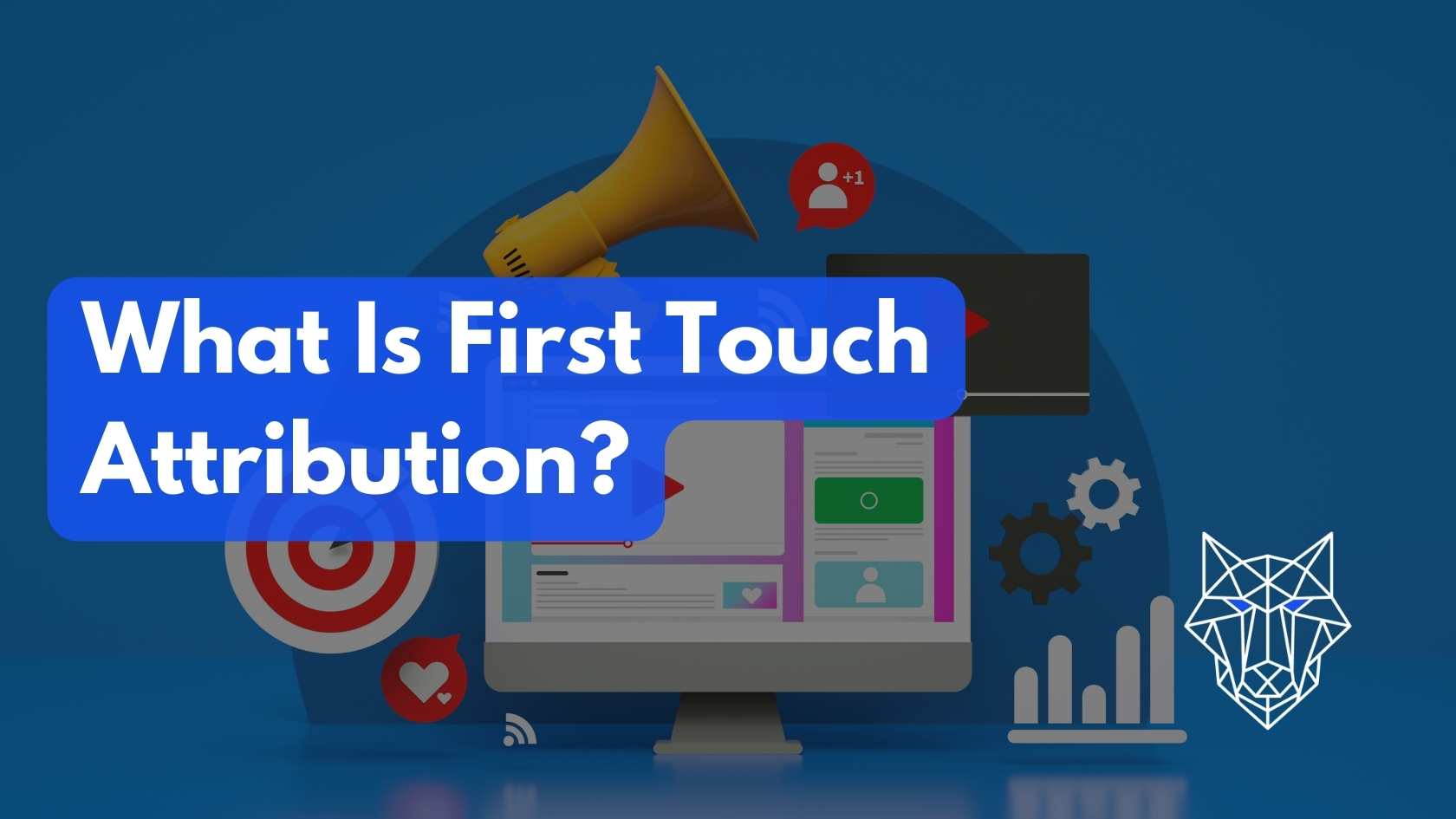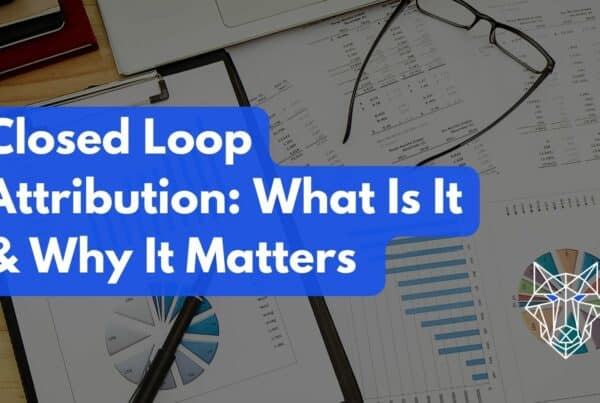Last updated on August 29th, 2023 at 10:46 am
In the world of marketing, it’s essential for small business owners and marketers to understand the effectiveness of their advertising efforts. One crucial aspect that often gets overlooked is first-touch attribution. But what exactly is first-touch attribution?
In this blog post, we’ll dive deep into this topic and explore its significance for your business. So, grab a cup of coffee, and let’s get started!
Understanding First-Touch Attribution
First-touch attribution refers to the process of giving credit to the first touchpoint or interaction a potential customer has with your brand. It could be a click on an ad, a social media post, or even an email that led them to discover your business. This method helps you track and measure the effectiveness of your marketing campaigns by attributing the initial contact as the most significant factor in converting a lead into a customer.

The Importance of First-Touch Attribution
Effective marketing requires analyzing and optimizing every step of the customer journey. By understanding first-touch attribution, you can gain valuable insights into which channels or campaigns are attracting new leads. This information allows you to allocate your resources efficiently, focusing on initiatives that generate the most engagement at the top of the sales funnel.
Additionally, first-touch attribution enables you to personalize future interactions with potential customers. When you recognize the touchpoints that resonated with a lead initially, you can tailor your messaging to align with their interests and needs, increasing the likelihood of conversion.
Pros of First-Touch Attribution
Here are some potential pros of using the first-touch attribution model:
- Simplicity and Clarity: First-touch attribution is one of the simplest attribution models to understand and implement. It attributes all credit to the first interaction, making it straightforward to calculate and communicate within a marketing team.
- Highlighting Initial Impact: First-touch attribution emphasizes the initial touchpoint that introduced the customer to your brand or product. This can be particularly useful in situations where you want to measure the effectiveness of top-of-funnel marketing efforts that aim to generate awareness and interest.
- Insight into Entry Points: Using the first-touch model can provide insights into the most common entry points for your customers. This information can help you tailor your marketing strategies and content to better align with those initial touchpoints.
- Effective for Single-Touch Conversions: In cases where the majority of conversions happen after a single interaction (e.g., impulse buys, low-cost products), the first-touch attribution can accurately reflect the customer journey.
- Suitable for Short Sales Cycles: When the sales cycle is short and customers make quick purchasing decisions, the first interaction might play a significant role in influencing that decision. This makes the first-touch attribution model relevant in such scenarios.
- Identifying Top-of-Funnel Performance: If your primary goal is to evaluate the performance of marketing efforts focused on generating leads and introducing customers to your brand, the first-touch attribution model can provide valuable insights into this aspect of your marketing strategy.
However, it’s important to note that while first-touch attribution has its advantages, it also has limitations.
Cons of First-Touch Attribution
While the first touch can be important, it leaves out other possible reasons a lead converted. Last touch or closed loop attribution models help bridge those gaps of other reasons a lead could have converted. For instance, in the example above, the Google Ad wouldn’t get the credit for the conversion in first touch attribution. But, the lead may never have converted if it wasn’t for the Google Ad.
It oversimplifies the customer journey by ignoring the impact of subsequent touchpoints and interactions that may contribute to the final conversion. In reality, customer journeys are often more complex, involving multiple touchpoints across various channels before a conversion occurs. Using only the first-touch attribution model may lead to inaccurate assessments of the effectiveness of middle and bottom-of-funnel marketing efforts.
Other Marketing Attribution Models
There are many different marketing attribution models, each offering a different perspective on how credit should be distributed. Here are the other most common types of marketing attribution models:
- Last-Touch Attribution: Contrary to first-touch attribution, last-touch attribution attributes all credit for a conversion or sale to the final touchpoint before the customer converts. This method gives the most credit to the last marketing activity the customer engaged with, like clicking on a specific ad or link that leads to the purchase. While it may be straightforward, last-touch attribution overlooks the cumulative impact of previous touchpoints that may have nurtured the lead.
- Linear Attribution: Linear attribution divides credit equally among all touchpoints in the customer journey. Every touchpoint is given the same amount of credit, regardless of its position in the journey.
- Time Decay Attribution: This model assigns more credit to touchpoints closer to the time of conversion. The touchpoints that are closer in time receive a higher proportion of the credit.
- Position-Based (U-Shaped) Attribution: Also known as U-Shaped attribution, this model gives a larger portion of the credit to the first and last touchpoints, while the remaining credit is distributed among the touchpoints in between. This recognizes the importance of both the initial awareness and the final decision-making touchpoints.
Even More Models
- Algorithmic Attribution: Algorithmic attribution models use complex algorithms and machine learning to assign credit based on the observed patterns in historical data. They take into account multiple touchpoints, their order, and various factors to determine the optimal credit distribution.
- Custom Attribution: Businesses can create their own attribution models tailored to their specific needs and goals. This might involve combining elements of different models or incorporating additional factors that are unique to the business.
- Data-Driven Attribution: This model uses statistical analysis to analyze the historical performance of different touchpoints and assigns credit based on their actual impact on conversions.
- Multi-Touch Attribution: Multi-touch attribution considers multiple touchpoints throughout the customer journey and attributes credit to all relevant touchpoints that contributed to the conversion.
- Closed-Loop Attribution: tracks the entire customer journey, from initial touchpoints to the final conversion or purchase, and allows marketers to understand precisely which marketing activities contribute most significantly to revenue generation.
Your choice of attribution model depends on various factors, including the nature of the business, the complexity of the customer journey, and the available data. Some businesses might even use a combination of different attribution models to gain a more comprehensive understanding of their marketing efforts impact.
Implementing First-Touch Attribution Strategies
Now that you grasp the concept and significance of first-touch attribution, it’s time to implement it effectively into your marketing strategy. Here are a few strategies to consider:
Utilize Tracking Tools
To accurately attribute first-touch interactions, you need reliable tracking tools. Implement analytics platforms like Google Analytics, which provide comprehensive reports on traffic sources, conversions, and user behavior. These tools can help you identify the channels that are driving the most initial engagement and measure their impact on your bottom line.
As a digital marketing agency, we prefer systems like Google Analytics, CallRail, WhatConverts, or our own Lead Center. However, you will have to find a system that integrates with your current marketing stack well.
Establish Clear Tracking Parameters
To ensure accurate attribution, it’s crucial to define clear tracking parameters for each marketing channel. This includes adding UTM codes to your URLs, implementing conversion tracking pixels for ads, and setting up event tracking for email campaigns. By doing so, you can capture data about each touchpoint effectively, allowing for accurate attribution analysis.
Some of the systems mentioned above do this for you. Others will need to be manually set up like Google Analytics.
Analyze Data Regularly
Once you’ve set up your tracking tools and parameters, regularly analyze the data to gain insights into which touchpoints are driving the most conversions. Identify patterns and trends to understand the preferences and behaviors of your audience. Use this information to refine your marketing efforts and invest more resources in the channels that yield the greatest results.
With first-touch attribution, you will want to be able to run a report on which leads converted and of those leads, which marketing efforts had the most conversions according to the first-touch attribution model.
Final Thoughts
First-touch attribution plays a critical role in understanding the customer journey and optimizing your marketing strategies. By giving credit to the initial touchpoints that bring leads to your business, you can make informed decisions about resource allocation and tailor your messaging for better conversion rates. So, don’t overlook the power of first-touch attribution in unlocking the full potential of your marketing efforts!
Frequently Asked Questions
How can first-touch attribution help small business owners and marketers?
- First-touch attribution allows small business owners and marketers to identify which marketing channels or campaigns are attracting new leads. This knowledge helps them allocate their resources efficiently and focus on initiatives that generate the most engagement at the top of the sales funnel. Additionally, first-touch attribution enables personalized interactions with potential customers, increasing the likelihood of conversion.
What are some key strategies for implementing first-touch attribution?
- To implement first-touch attribution effectively, utilize tracking tools like Google Analytics, establish clear tracking parameters for each marketing channel, and analyze data regularly. These strategies will provide insights into the touchpoints driving conversions and allow for informed decision-making and optimization.
Why is it important to analyze data regularly in first-touch attribution?
- Regular data analysis helps identify patterns and trends in customer behavior, allowing small business owners and marketers to understand audience preferences and refine their marketing efforts accordingly. By analyzing data regularly, they can make informed decisions about resource allocation and invest more resources in the channels that yield the greatest results.





